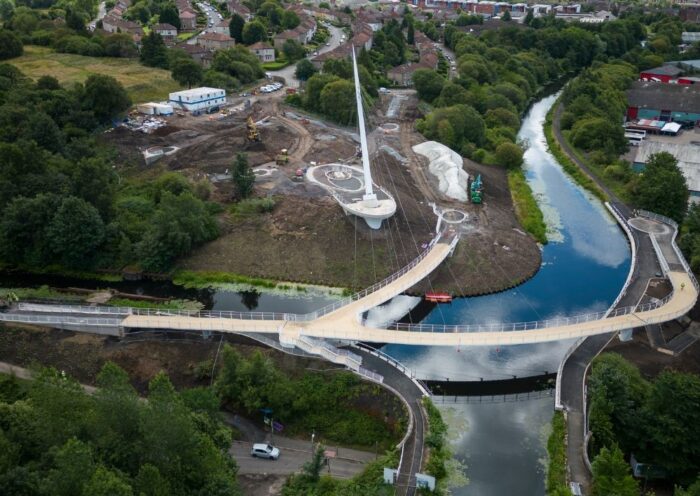
Scotland is well known for the engineering feats that are its major bridges. Across the Tay, Forth and Clyde, you can witness examples of construction excellence that have connected our cities with the entire nation and beyond for many years.
But this country of ours never stands still, and new bridges are being built that will link communities and provide opportunities to easily access work and leisure opportunities.
This exciting spirit of joined-up thinking is especially visible in Glasgow, where two new bridges are set to transform city communities.
One is the Stockingfield Bridge, a £14m active travel bridge built over the Forth & Clyde Canal in north Glasgow. The new crossing opened in November and it connects the three communities of Ruchill, Gilshochill and Maryhill. It’s perfect for getting into the city, with people now able to easily cycle or walk into town, which is good for the environment and boosts health and wellbeing, too.
Glasgow City Council leader Susan Aitken is delighted with the project. She said: “The rebirth of Glasgow’s Canal in recent years has been instrumental in the ongoing and long overdue transformation of the north of the city. It is Glasgow’s other waterfront, making nature more accessible to tens of thousands of nearby residents, improving health and well-being and the look and feel of communities. The opening of Stockingfield Bridge is a milestone in that journey, a new landmark for North Glasgow.”
And just along the M8, another crossing is taking shape that will also change lives and improve communities.
The Sighthill Bridge will link Sighthill with the city centre. It’s part of a £250m redevelopment of the area, which is being completely transformed after the demolition of the tower blocks that had loomed over this part of Glasgow for many decades. New homes are being built for families to enjoy and the bridge will allow cyclists and pedestrians to get to their work or social events in the city centre with ease.
It’s a massive project – the biggest of its kind in the UK outside London – and it’s proof that the future of city living will be based on commuting by cycle or on foot and that communities will be joined in ways that will bring people closer together. And this offers great opportunities for businesses to thrive at the heart of these communities.
